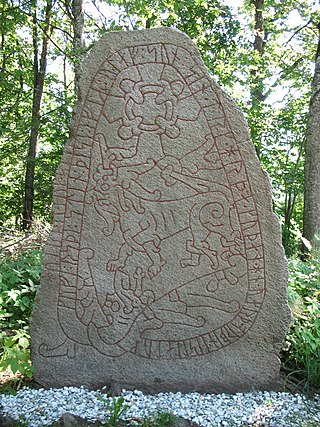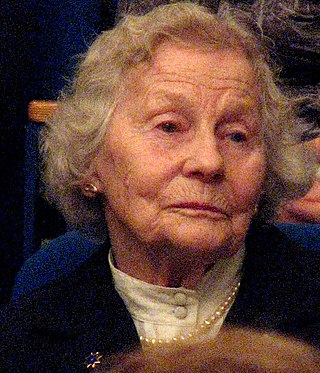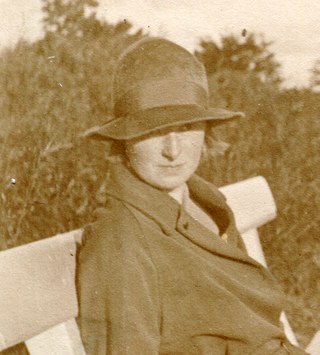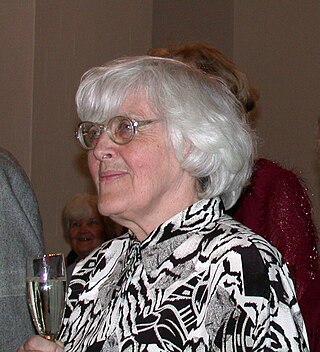Related Research Articles

Konstantin Päts was an Estonian statesman and the country's president in 1938–1940. Päts was one of the most influential politicians of the independent democratic Republic of Estonia, and during the two decades prior to World War II he also served five times as the country's prime minister. After the 16–17 June 1940 Soviet invasion and occupation of Estonia, President Päts remained formally in office for over a month, until he was forced to resign, imprisoned by the new Stalinist regime, and deported to the USSR, where he died in 1956.

In Estonia, the population of ethnic Russians is estimated at 296,268, most of whom live in the capital city Tallinn and other urban areas of Harju and Ida-Viru counties. While a small settlement of Russian Old Believers on the coast of Lake Peipus has an over 300-year long history, the large majority of the ethnic Russian population in the country originates from the immigration from Russia and other parts of the former USSR during the 1944–1991 Soviet era of Estonia.
Postimees is an Estonian daily newspaper established on 5 June 1857, by Johann Voldemar Jannsen. In 1891, it became the first daily newspaper in Estonia. Its current editor-in-chief is Priit Hõbemägi. The paper has approximately 250 employees.
The Estonian resistance movement was an underground movement to resist the occupation of Estonia by Nazi Germany, 1941–1944 during World War II. Due to the unusually benign measures implemented in Estonia by the German occupation authorities, especially in contrast to the preceding harsh Soviet occupation of Estonia (1940–1941), the movement was slower to develop effective tactics on a wide scale than in other occupied countries.

Jaan Kaplinski was an Estonian poet, philosopher, politician, and culture critic, known for his focus on global issues and support for left-wing/liberal thinking. He was influenced by Eastern philosophical schools.

The Estonian Workers' Commune was a government claiming the Bolshevik-occupied parts of Republic of Estonia as its territories during the Estonian War of Independence and the Russian Civil War. It was recognised as an independent state only by Russian SFSR on December 7th, 1918.

Boris Meissner was a German lawyer and social scientist, specializing in Soviet studies, international law and Eastern European history and politics.

The Estonian Age of Awakening is a period in history where Estonians came to acknowledge themselves as a nation deserving the right to govern themselves. This period is considered to begin in the 1850s with greater rights being granted to commoners and to end with the declaration of the Republic of Estonia in 1918. The term is sometimes also applied to the period around 1987 and 1988.
Since 1991 Estonia has changed from being a former Soviet republic to a member of the European Union and the European Monetary Union, making a rapid transformation in several fields, including the mass media, which is a vibrant and competitive sector. For many years Estonia has been among the top ten in Reporters Without Borders’ (RSF) Press Freedom Index. In 2017 it was ranked 12th out of 180 countries by RSF while Freedom House assigned Estonia’s press freedom a score of 16/100. A cross-media landscape that embraces traditional media as well as the Internet and digital media characterises the contemporary media system in Estonia.

The National Committee of the Republic of Estonia was a deliberative and legislative body, formed by Estonian politicians and members of the last government of Republic of Estonia before the Soviet occupation, to control the Anti-Soviet resistance movement in Nazi-occupied Estonia in March 1944. By April 1944 a large number of the committee members were arrested by the German security agencies. On September 20, 1944, the committee proclaimed the Republic of Estonia restored, but two days later, the Soviet Army took control of Tallinn.
Elections to the Supreme Soviet were held in the Estonian SSR on 18 March 1990. Altogether 392 candidates ran for the Soviet-style legislature's 105 seats, of which four were pre-allocated to the military districts of the Soviet Army. The pro-independence Popular Front won the plurality. The coalition of the reformed Estonian communists, who favored independence but close relations with the USSR and were supported by Indrek Toome who was running under the Free Estonia banner, won 27 seats. The anti-independence, pro-Moscow "Joint Soviet of Work Collectives", representing mostly the ethnic Russian immigrant minority in Estonia, won 25 seats. During its first session, the new legislature elected the former Communist Party member Arnold Rüütel as its chairman, allowing him to stay as the nominal leader of Estonia.

The name of Estonia has a long and complex history. It has been connected to Aesti, first mentioned by Tacitus around AD 98. The name's modern geographical meaning comes from Eistland, Estia and Hestia in the medieval Scandinavian sources. Estonians adopted it as an endonym only in the mid-19th century.

Estonia, officially the Republic of Estonia, is a country by the Baltic Sea in Northern Europe. It is bordered to the north by the Gulf of Finland across from Finland, to the west by the sea across from Sweden, to the south by Latvia, and to the east by Lake Peipus and Russia. The territory of Estonia consists of the mainland, the larger islands of Saaremaa and Hiiumaa, and over 2,300 other islands and islets on the eastern coast of the Baltic Sea, covering a total area of 45,335 square kilometres (17,504 sq mi). Tallinn, the capital city, and Tartu are the two largest urban areas of the country. The Estonian language is the indigenous and official language of Estonia, and it is the first language of the majority of the country's population of 1.4 million, as well as the world's second-most spoken Finnic language.

Olevik was a weekly newspaper published in Tartu, Estonia. The paper existed between 1882 and 1915.

LHV Pank is an Estonian banking and financial services company headquartered in Tallinn. It is a subsidiary of AS LHV Group, a public company listed on the Nasdaq Tallinn Stock Exchange. The bank's clients include private individuals, small and medium-sized companies and institutional investors. LHV Pank is the third largest bank in Estonia. LHV has branch offices in Tallinn, Tartu and Pärnu. LHV Pank employs over 800 people. More than 350 000 clients use the bank's services. LHV Pank is one of the largest brokers on NASDAQ OMX Baltic stock exchanges and the largest broker for Baltic retail investors in international markets.

The Estonia electoral district was a constituency created for the 1917 Russian Constituent Assembly election, covering the Autonomous Governorate of Estonia.

Heli Susi was an Estonian teacher and translator.

Karin Luts was an Estonian painter and a graphic artist.
Kalev Gustav Arro was an Estonian partisan during the Soviet occupation of Estonia. He was part of the Forest Brothers (Metsavennad), a group of resistance fighters who hid in the forests of Estonia, Latvia, and Lithuania in the struggle against Soviet authority. He is noted for disguising himself as a vagrant for 30 years to evade capture.

Linda Poots was an Estonian zoologist and journalist known for her work with bats. She was the longtime editor of the Estonian nature magazine Eesti Loodus.
References
- 1 2 3 "160 Aastat Postimehega". www.postimees.ee. Retrieved 3 June 2024.
- 1 2 3 Maarja Lõhmus (January 2013). "Political correctness and political humour in Soviet Estonia and beyond". Folklore. 1: 139–158. doi: 10.7592/ep.1.lohmus . ISBN 9789949490226.
- 1 2 Epp Lauk; Tiiu Kreegipuu (2010). "Was it all Pure Propaganda? Journalistic Practices of "Silent Resistance' in Soviet Estonia Journalism". Acta Historica Tallinnensia. 15: 167. doi: 10.3176/hist.2010.1.08 .
- 1 2 Stefanie Averbeck; Stefan Wehmeier (2002). Kommunikationswissenschaft und Public Relations in Osteuropa: Arbeitsberichte. Leipzig: Leipziger Universitätsverlag. p. 81. ISBN 978-3-935693-67-7.
- ↑ Peeter Vihalemm (February 2001). "Development of Media Research in Estonia". Nordicom Review. 22 (2): 79–92. doi: 10.1515/nor-2017-0357 . S2CID 54745912.
- ↑ Toivo Miljan (2004). Historical Dictionary of Estonia. Lanham, MD: Scarecrow Press. p. 467. ISBN 978-0-8108-6571-6.
- ↑ Halliki Harro-Loit; Anu Pallas (2009). "Temporality and commemoration in Estonian dailies". In Halliki Harro-Loit; Katrin Kello (eds.). The Curving Mirror of Time. University of Tartu Press. p. 20. ISBN 978-9949-32-259-6. Archived from the original on 24 September 2015.